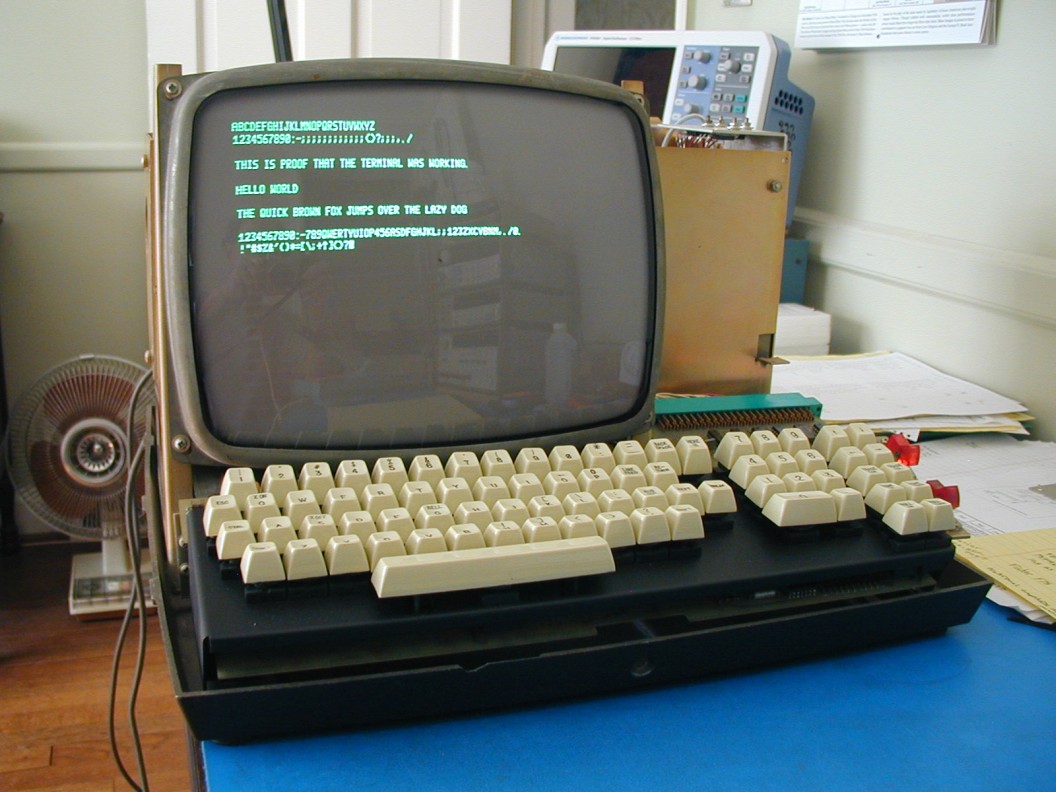Some information about the CTC Datapoint 3300 Computer Terminal from the 1960's

I recently volunteered to dump the character generator ROM used in the Datapoint 3300 terminal. This was complicated by the fact that the input signals to the ROM are 0-12V, with 0V representing logic one. So a special circuit was needed to allow a PIC chip to read the data and send it over a serial cable to a PC to be saved.
Since I had the terminal already (it doesn't belong to me), I decided to try to get it working, as it had been almost 10 years since it was last usable. Unlike televisions from that era, the HV generation for the CRT was handled by a dedicated circuit, available at that time from a company that specialized in them. You would simply feed in 120VAC and the circuit (enclosed in a small metal box) would generate 15KV. Unfortunately, the HV power supply had been removed from the 3300 when I got it, so I didn't have much hope of ever seeing anything on the CRT. But thanks to Google, I found that someone had listed the exact supply that was missing on a popular auction site for a very reasonable price. He actually had two listed, so I bought them both. These supplies looked brand new, despite being fifty years old!
When the HV supply arrived, I installed it and powered up the terminal. I could see characters on the screen when I typed! I found that when I pressed a key, it would repeat until Break or Enter was pressed. At first I thought that this must be a problem with the keyboard circuits, but I was able to power up the keyboard by itself on the bench and did not find anything that I thought would cause keys to repeat. Luckily I was able to download the service manual for the 3300, which contains detailed explanations of how each part of the circuitry operates. This was invaluable, as this terminal was designed before single-chip keyboard encoders, SRAM chips, and microprocessors existed, so the designers had to implement all of the functions with 7400 TTL chips. (The display buffer was implemented using an array of shift register chips)
Most of the circuitry in the 3300 is located on five plug-in pc boards. These are mounted in a stack under the CRT. Since I did not have an extender board, the only one I could get to with the terminal running was the top board. The output of the keyboard was fed to the third board in the stack ("Interface 2"), and it seemed this was where the key repeating problem was. I decided to power up just that board by itself and see if I could find something. Luckily, by feeding in a clock signal on the correct pin and the 5V power, I was able to find several signals that did not look correct on the oscilloscope. I replaced two 7474 chips and a 7400 chip, and now those signals looked good. So I re-installed the board in the terminal and found that the key-repeating problem was fixed.
Now that I could type characters and see them on the screen, I decided to test every key, and found that some of them were not working. There were actually several different reasons for this, as explained in this document I have put together on just the keyboard.
Actually, aside from needing a good cleaning, the 3300 was in rather good condition considering its age. It really didn't need much to get it going again.
Please note: The Datapoint 3300 terminal contains high voltages, which can kill you if you are not careful. Please do not even remove the cover of any device that uses a cathode ray tube if you are not aware of the dangers and know how to work around high voltages carefully. I will not be responsible for any injury or loss of life resulting from the use of any information presented here.